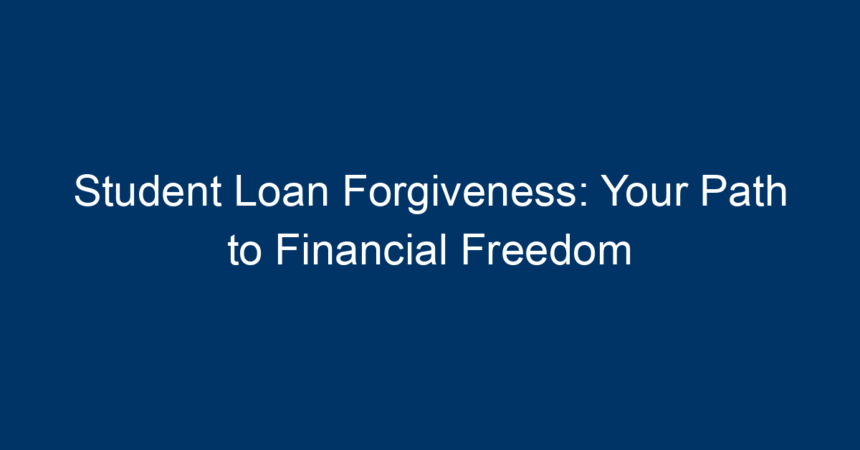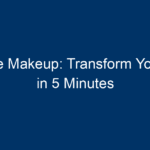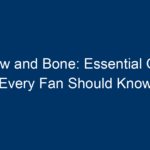Student loan debt has become a significant burden for millions of graduates across the United States. As tuition fees continue to rise, many students graduate with enormous financial obligations that can take decades to pay off. However, the good news is that student loan forgiveness programs are available, offering a pathway to financial freedom. In this article, we will explore what student loan forgiveness is, the various programs available, who qualifies, and actionable steps you can take to work toward being debt-free.
Understanding Student Loan Forgiveness
Student loan forgiveness refers to the cancellation of part or all of an individual’s student debt. This can alleviate the financial strain faced by graduates, allowing them to reinvest their money into other aspects of their lives, such as home ownership, saving for retirement, or starting a business. Various programs exist to help individuals qualify for student loan forgiveness, making it essential for borrowers to understand their options.
Types of Student Loan Forgiveness Programs
1. Public Service Loan Forgiveness (PSLF)
PSLF is one of the most prominent student loan forgiveness programs. To qualify, borrowers must work in a public service job and make 120 qualifying payments on their eligible federal student loans. This means working for a government organization or non-profit entity. After meeting these requirements, the remaining balance of the student loans is forgiven.
2. Teacher Loan Forgiveness
For teachers, especially those who work in low-income schools, the Teacher Loan Forgiveness program offers substantial benefits. Qualified teachers can receive up to $17,500 in loan forgiveness after working five consecutive years in a qualifying school.
3. Income-Driven Repayment (IDR) Plans
Income-Driven Repayment plans adjust monthly payments based on income and family size. After 20 or 25 years of qualifying payments under these plans, borrowers may have their remaining loan balance forgiven.
4. Perkins Loan Cancellation
The Perkins Loan program provides loan cancellation for certain public service professions, including teachers, nurses, and law enforcement officers. The specific terms can vary, but up to 100% of the loan may be canceled for qualified service.
Who Qualifies for Student Loan Forgiveness?
Understanding eligibility requirements is crucial for borrowers seeking student loan forgiveness. Here are some general criteria:
- Type of Loans: Only federal student loans are generally eligible for forgiveness programs. Private loans typically do not qualify.
- Employment Status: Many forgiveness programs require borrowers to work in qualified public service jobs or educational roles.
- Payment History: Borrowers must make a certain number of qualifying payments. This often involves being on specific repayment plans.
- Duration of Service: Some programs necessitate a commitment to work in a field or position for a certain number of years.
Steps to Pursue Student Loan Forgiveness
Step 1: Research Your Options
Start by researching the various student loan forgiveness programs to determine which ones align with your career goals and financial situation. Websites like the Federal Student Aid website provide comprehensive information.
Step 2: Verify Your Loans
Ensure that you have federal student loans and verify the type of loans you possess. Some forgiveness programs are specific to certain types of federal student loans.
Step 3: Enroll in Qualifying Repayment Plans
For income-driven repayment plans, you’ll need to apply and submit documentation for your income. For PSLF, it is essential to be on a qualifying repayment plan, such as the Direct Loan program.
Step 4: Maintain Documentation
Keep meticulous records of your employment, payments, and any changes in your financial situation. It is advisable to submit the Employment Certification Form regularly to confirm your qualifying employment.
Step 5: Stay Informed
Policies regarding student loan forgiveness can change frequently. Staying abreast of news regarding any updates, expansions, or shifts in these programs is crucial.
The Financial Benefits of Student Loan Forgiveness
Achieving student loan forgiveness can significantly enhance your financial well-being. Here are some key benefits:
- Increased Disposable Income: Once your loans are forgiven, you free up money that can be redirected towards savings, investments, or personal expenses.
- Reduced Financial Stress: Eliminating student debt can alleviate the burden of monthly payments, improving mental and emotional well-being.
- Opportunity for Career Changes: With less financial strain, you may feel empowered to switch careers or pursue roles in lower-paying yet fulfilling fields.
- Improved Credit Score: Reducing your overall debt can positively impact your credit score, helping you in future financial endeavors.
Common Misconceptions About Student Loan Forgiveness
Despite the potential benefits, there are several misconceptions surrounding student loan forgiveness:
-
“Everyone can get their loans forgiven.”
Many borrowers believe that student loan forgiveness is available to everyone. In reality, specific criteria must be met, and not all loans qualify. -
“It’s easy to qualify.”
While programs exist, qualifying for student loan forgiveness can often be complex and entails navigating various requirements. - “Forgiveness happens automatically.”
Many borrowers mistakenly think their loans will be forgiven after a certain period without taking the necessary actions to apply or demonstrate eligibility.
Conclusion: Your Path to Financial Freedom
Student loan forgiveness can be a transformative process, offering a pathway to financial freedom that many borrowers desperately need. By outlining your options, understanding eligibility criteria, and taking proactive steps, you can find a way to reduce or eliminate your student loan debt.
In summary, consider these actionable insights:
- Assess Your Loans: Know your loan types and eligibility for forgiveness.
- Explore Your Career Options: If you’re looking for student loan forgiveness, working in public service or qualified teaching roles can be beneficial.
- Stay Updated: Keep an eye on policy changes regarding student loans and forgiveness programs.
- Network for Support: Join forums or communities for borrowers who are also pursuing loan forgiveness. Sharing experiences can provide valuable insights and support.
With dedication and informed steps, you can take control of your financial future and move closer to achieving student loan forgiveness—ultimately paving your path toward financial freedom.




